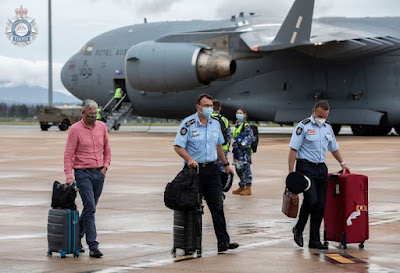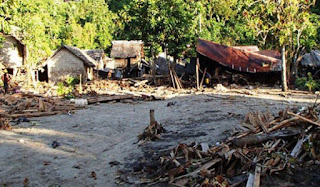TOBACCO - A THREAT TO PACIFIC DEVELOPMENT
In the Pacific, since 2014, nine Pacific
members have increased taxes on tobacco products. Several have already
strengthened their tobacco control legislation which includes packaging and
labelling, restrictions on advertising and sponsorship and declaration of
smoke-free public spaces. This was
highlighted by SPC’s Pacific Community Director General, Dr Colin Tukuitonga as
the world marks ‘World No Tobacco Day’
today.
In the world, tobacco kills around seven
million people each year and remains the world’s leading preventable cause of
death.
To address this, Pacific Island
countries and territories are working with the Pacific Community (SPC) and
other partners to implement their respective Tobacco Control programmes.
The Pacific Non-Communicable Disease
(NCD) Roadmap which was approved by Pacific Ministers at the Joint Economic
Forum and Pacific Health Ministers’ meeting in 2014 focuses on tobacco control
and sets targets of a gradual increase in taxation on the retail price of
cigarettes over the medium term to 70 per cent.
“Tobacco is a threat to our region’s
development. The good news is that Pacific Island countries and territories
recognise this crisis and are proactively implementing measures to address it, Dr
Colin Tukuitonga said.
“At the inaugural Pacific NCD Summit
last year, Pacific leaders committed to strengthening legislation to ensure
that they comply with the Framework Convention on Tobacco Control and meet or
exceed the Pacific NCD Roadmap taxation target in order to achieve a ‘Tobacco
Free Pacific’ by 2025. The Pacific Community, along with other development
partners will continue to support this important work,” Dr Tukuitonga added.
While acknowledging that a lot more work
needs to be done, progress is being made towards achieving a Tobacco Free
Pacific.
In Samoa for example, a comparison of
two STEPwise to surveillance (STEPS) surveys noted that daily smokers
in Samoa (ages 25 – 64 years old) dropped from approximately 35 per cent in
2002 to under 25 per cent in 2013.
For Solomon Islands since January 2015,
it is now compulsory that all tobacco packaging display graphic health warnings
on 70% of the front and 30% of the back of tobacco packaging.
In a recent demonstration of Pacific
Island countries and territories working together to address tobacco control in
the Pacific; in October 2016, French Polynesia and SPC also supported the
establishment of a smoking cessation clinic in Wallis and Futuna.
Currently, the Pacific claims some of
the highest smoking rates in the world with studies revealing that
approximately half of the adult population in Kiribati, Nauru, New Caledonia, Papua
New Guinea, Tokelau and Wallis and Futuna smokes daily.
World No Tobacco Day is observed on this
day each year as a reminder of the harmful risks associated with tobacco use,
an opportunity to reflect on the challenges and progress made to reduce its
consumption as well as a call for countries to prioritize and accelerate
tobacco control efforts as part of their responses to the 2030 Agenda for
Sustainable Development.
While tobacco use poses an obvious
health risk, it also comes at a substantial loss to national economies through
increased health service costs and reduced productivity as a result of
premature deaths.
ENDS///




Comments
Post a Comment